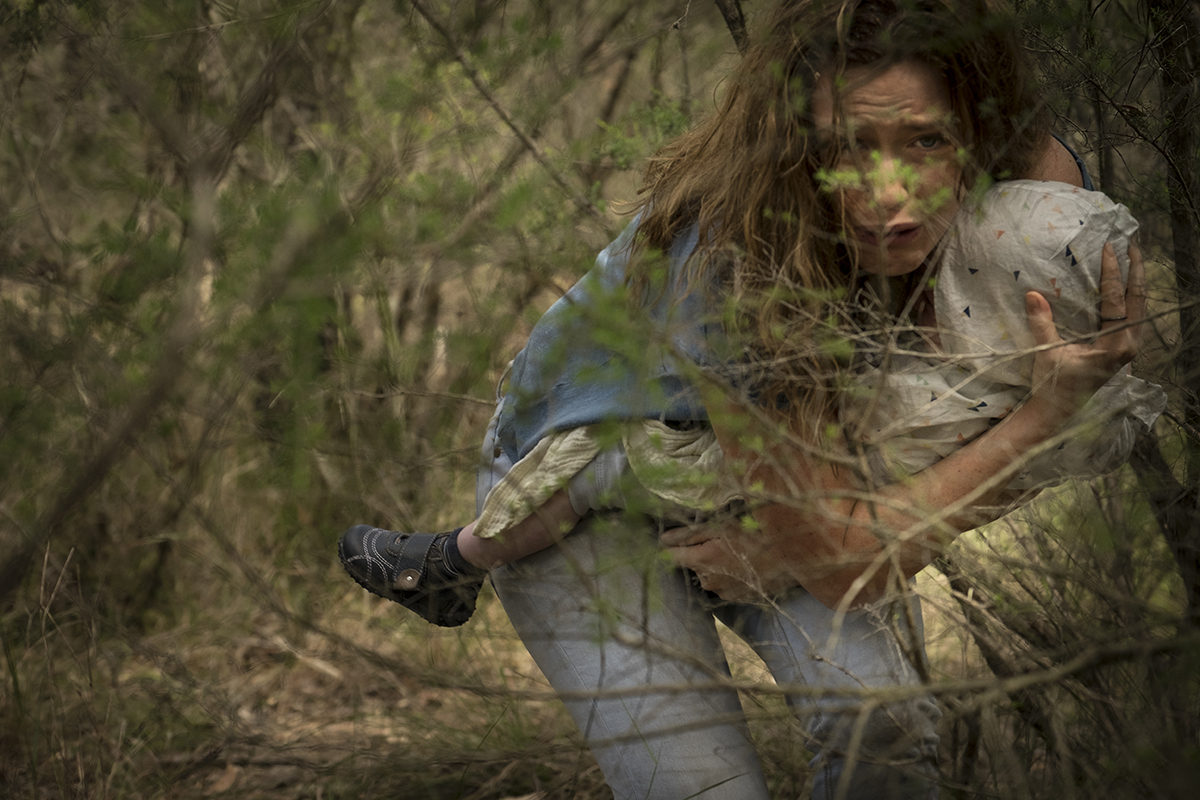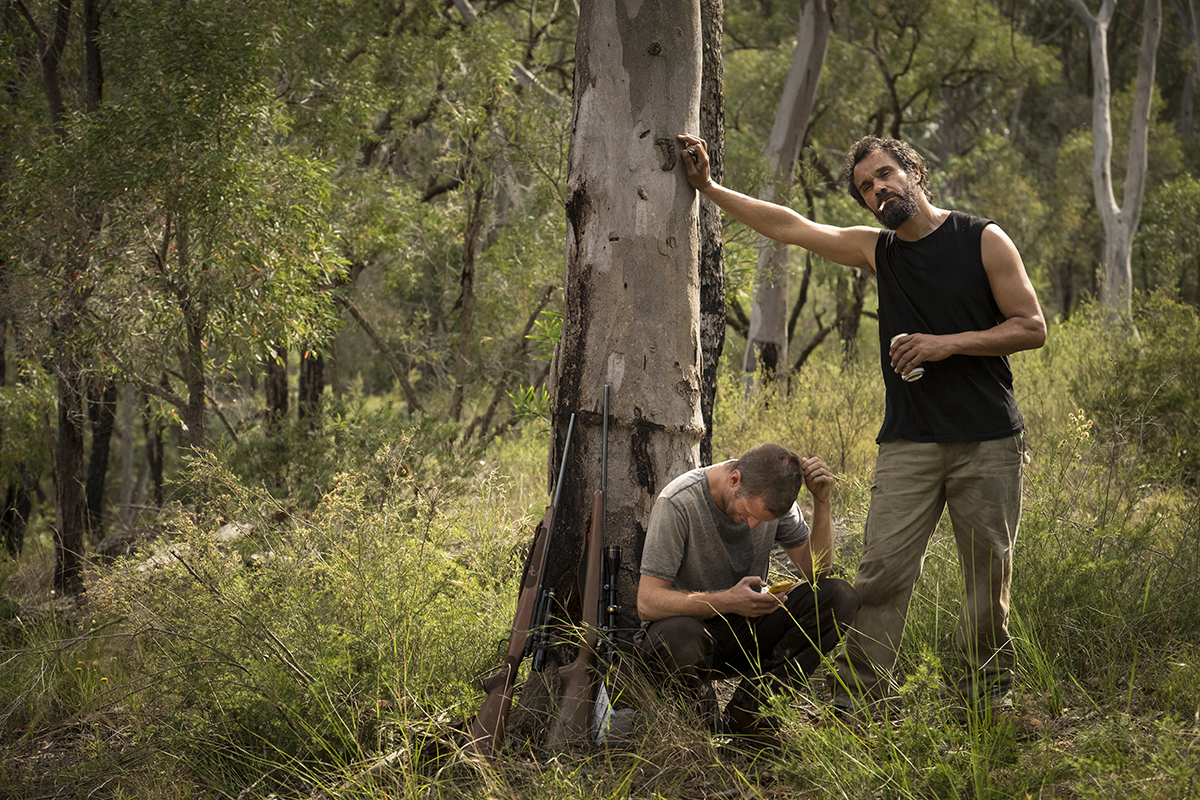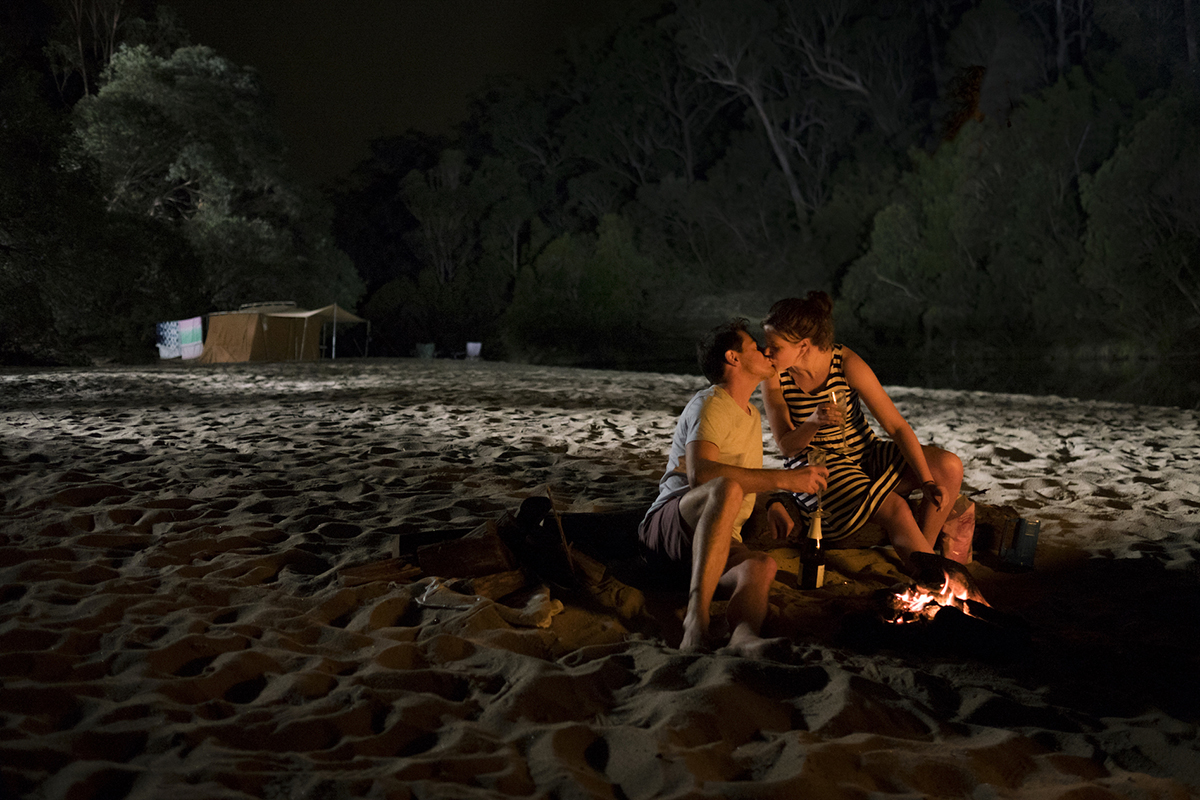
Killing Ground: Horror’s limits
We’re in a car, travelling down a quiet road that takes us far from urban sprawl and into the bush. For horror aficionados, this is a familiar beginning. Inside the car, typically a couple (or a family or friends) banter. Classic rock plays on the radio, underlining the upbeat mood, the normality. During the drive, characters and relationship dynamics are sketched out before arrival at cabin or campsite signals events will sooner or later take a nasty turn. In the opening scene of Funny Games (2007), Michael Haneke both disrupts and highlights the false naturalism of this trope by blasting a jarring thrash metal track by Naked City over the journey of his central family to their lakeside holiday house.
In his debut feature, the horror-thriller Killing Ground, Damien Power opts for the more conventional approach. The young couple in this car are Sam (Harriet Dyer) and Ian (Ian Meadows), on their way to a secluded campsite to celebrate New Year’s Eve. During their playful exchange we learn they’re in love and that he’s a doctor. They have a bright future; in other words, ripe for destruction. They arrive at a campsite that’s starkly beautiful but unsettlingly still, from the creek’s mirror surface to a solitary tent pitched a little way along the sandy bank.
The film introduces another duo: “German” Shepherd (Aaron Pedersen) and “Chook” Fowler (Aaron Glenane), ex-cons living together in the small town close to the reserve where Sam and Ian are camping. German has already appeared, giving Ian directions to Stony Creek campsite, his dog and ute recalling those of Bradley Murdoch, the man convicted of the 2001 murder of British tourist Peter Falconio. Like Mick Taylor, the outback bogeyman modelled on Murdoch and serial killer Ivan Milat at the centre of Greg McLean’s Wolf Creek (2005), German and Chook are pig hunters from a lower socioeconomic background who represent a sinister aspect of Australian larrikinism.

Killing Ground
These are the agents of chaos set to shatter the terrible innocence of middle-class campers; again, familiar horror territory. In this context of stereotypically white Australian masculinity, Pedersen’s identity as an Indigenous Australian raises a question as to its significance to the narrative. But since Power did not write the character as explicitly Indigenous and nor does Pedersen’s performance make reference to it, any meaning attached would appear to be brought to it by the individual viewer. Steve Dow, writing for The Saturday Paper, found it significant; the US writer of a rogerebert.com review who initially referred to German as “poor white trash” clearly did not.
Indigeneity and colonialism are present more generally as themes, however. One camper at Stony Creek tells his family that they are sitting close to the site of an historic massacre of the local Koori tribe by settlers, to which his daughter responds, “I don’t like it here.” In the film’s opening scenes, Simon Chapman’s pellucid cinematography, combined with Leah Curtis’ ethereal score, evokes a landscape of unease, exquisite yet oppressive. In the film’s more striking passages, Power makes use of the lost child motif, an emblem since colonial times of white Australia’s fear of the bush. All these elements suggest a place that’s tainted, inimical.
It remains ambiguous as to whether this unquiet place attracts terrible things, or is the cause of them. What is clear, is that in this instance the terrible things take the form of sexual violence against women. Power seems to have concluded that the most effective way he could communicate ‘atrocity’ onscreen was through the depiction of rape — or at least its graphic prelude and aftermath. Male characters suffer too, but they’re not violated in the way that the film’s women are; the ways in which men’s and women’s bodies are presented is markedly different. Instead of addressing sadistic misogyny in an insightful way, as Karen Lam does in her supernatural horror film Evangeline (2013) or Maki Suzui in Kept (2014), Killing Ground uses sexual violence as a kind of shorthand for the evil that arises from a land blighted by colonialism, reducing rape to a narrative symbol.

Killing Ground
Pedersen and Glenane inhabit their roles with skill and menace, but these characters aren’t detailed enough for us to glean more than the bare fact of their predatory natures. Warped Australian masculinity and the twisted mentor-follower relationship are explored in far more depth in the arguably more horrific films The Boys (1998), Animal Kingdom (2010) and Snowtown (2011). Wolf Creek, an obvious antecedent to Killing Ground, provides a much tauter image of Ocker misogyny, as well as evoking a sickened place in the Australian psyche; though brutal, it holds back on explicit sexual violence.
Killing Ground’s depiction of an unquiet landscape, non-linear layering of timelines and fine acting promise a profundity that is never fully realised, instead only hinted at through various tropes — hunter-serial killers, white middle-class holidaymakers, lost children, cursed land — and ultimately overshadowed by gratuitous depictions of rape.
–
Killing Ground, writer, director Damien Power, performers Aaron Pederson, Harriet Dyer, Aaron Glenane, Ian Meadows, cinematographer Simon Chapman, composer Leah Curtis, editor Katie Flaxman, production design Claire Granville, distributor Mushroom Pictures, 2016
Top image credit: Killing Ground






